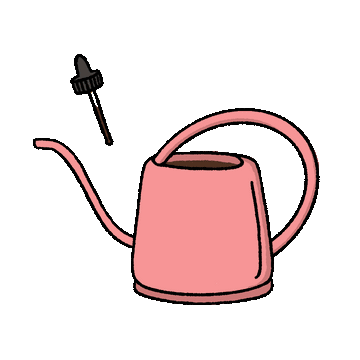It's three minutes past midday and I've already polished off my third cup of coffee. And I know I'm not alone here - each year Australia creates an estimated 75,000 tonnes of coffee waste, with most of that heading straight to landfill. Nuts!
Most coffee-drinking green thumbs will know about how beneficial coffee grounds can be in their garden - adding to compost, mixing directly into the soil or gifting to your worm farm. But if you're a strictly indoor/terrace gardener (hey hey to all the other apartment dwellers out there!), you might not know these same grounds can help your indoor jungle too.
Coffee grounds can be a wonderful source of nutrients for your indoor plants. You just need to know how to use them safely.
Common Problems with Coffee Grounds and Indoor Plants
Before diving into all the benefits of coffee grounds and how to achieve them, its a good idea to be across some of the potential risks associated with coffee and plants so you know how to avoid them.
Excess Moisture Retention
Coffee grounds are fantastic at moisture retention, so if you add them to your potting mix make sure you adjust your watering. Think about using a moisture meter, or adding perlite to the mix to increase drainage. In the end though, nothing beats sticking a finger in to get a feel for how much longer the mix is taking to dry out.
Excess Fungal Growth
You'll only really need to worry about this if your just adding used grounds directly to the top of the potting mix. Coffee grounds are loved by fungal organisms, which can cause fungal disease in your plants. Best way to manage this is to make sure you really work the grounds into the mix.
Fertiliser Burn
Because coffee grounds have a high nitrogen content you need to consider this when using in conjunction with other fertilisers. Coffee alone will not be enough to provide your plants with everything they need, so its best used as a supplement.
Best ways to Use Coffee Grounds with Indoor Plants
Now for the good bits. When used correctly, those spent coffee grounds can contribute to the health of your indoor plant fam, AND you'll reduce the amount of coffee waste going to landfill. Below are some suggestions for how you can use them.
Make Compost
This is the most effective way to use coffee grounds, although can be tough to manage in an apartment. But there are options: Reaching out to a community garden, investing in a 'electric-assist composter' (a small, countertop appliance that will convert waste to fertiliser), or have a worm farm.
Don't freak out about the smell - truth is compost shouldn't really have a smell and will only produce an ordor if you're mixing organics with non-organics.
Compost should always be applied very sparingly to indoor plants as you can risk fertiliser burn. Best way to use it is to mix a small quantity through a quality potting mix prior to potting up.
Make a liquid fertiliser
This one is easy. Simply leave your used coffee grounds in water (1 teaspoon of coffee grounds for 2 litres of water) for a few weeks. Stir every few days and let the grounds break down. The water will take on the coffee's nutrients and create perfect conditions for beneficial bacteria. Strain through a cheesecloth before pouring on your plants.
This should not replace your regular fertiliser though as coffee grounds alone do not contain enough macros (read our guide on fertiliser here) to provide a a complete feed for your plants. I like to use it as a supplementary feed - 1 week just water, one week i'll fertilise, then back to water, then the diluted coffee mix. Repeat.
Add to Potting Mix
Mix a small amount of used coffee grounds through fresh potting mix. We recommend 1 teaspoon to 1 litre of potting mix. The grounds will release their nutrients into the mix as they break down over time.



Leave a comment